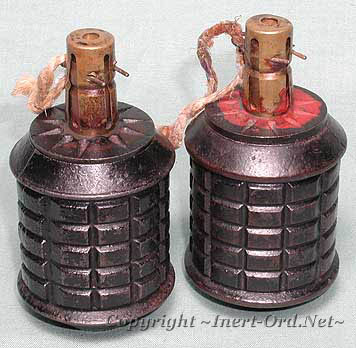 No
observed cast markings in the body as with the Type 91.
No
observed cast markings in the body as with the Type 91.Paper labels appear on the base as well as ink-stamped fill dates.
The red painted tops vary in amount of coverage.
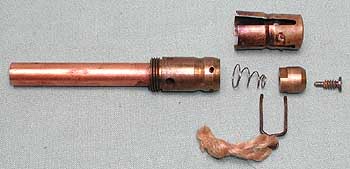
The fuze assembly for the Types 97 & 91 consist of a fuze housing with detonator, (much like a rifle cartridge), creep spring, firing pin assembly, retaining cap, and safety pin.
The firing pin is recessed in the striker cap, and needs to be screwed into position to arm the fuze.
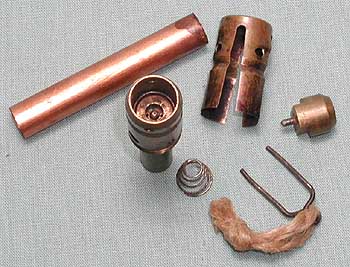
Once the fuze is armed, the safety pin is removed, (the indents
in the retaining cap holding the assembly together), then the head of the
fuze is struck against a suitably hard object, firing the primer and igniting
the delay train.
At right you can see into the fuze head. While the primer is gone (typical for interted grenades) the anvil and gas ports are still visible. The firing pin shown seated in its "armed" position.
At right you can see into the fuze head. While the primer is gone (typical for interted grenades) the anvil and gas ports are still visible. The firing pin shown seated in its "armed" position.
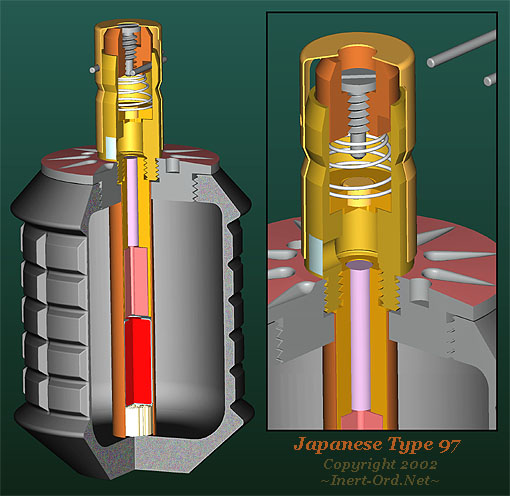
Type 97 Functional Details
Placed at the bottom of the fuze well is the detonator (red capsule) seated on a soft packing wad, either felt or paper. The delay element in contained in the fuze stem above, which is screwed into the main fuze body. There is a gas vent hole covered by a foil weather seal. The fuze assembly is inserted and screwed in place from the top. The grenade was armed by first screwing the firing pin down, so that it protrudes from the base of the striker. The safety pin is pulled. A sharp blow to the top of the fuze would overcome the creep spring and crush the thin brass cap allowing the pin to hit the primer and initiate the delay element. |
Detailed View of Type 97 Grenade #1

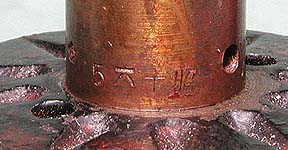
1st Tokyo (Army) Arsenal (manufacturer) 5 (May) followed by 6 10 Showa = 1941
Detailed View of Type 97 Grenade #2


This one is also from the 1st Tokyo Arsenal,
3 (March) Showa 16 (1941)

The fuze stem containing the delay common to both examples.
The markings indicate delay time for the fuze.
Read as "4 - 5 seconds".